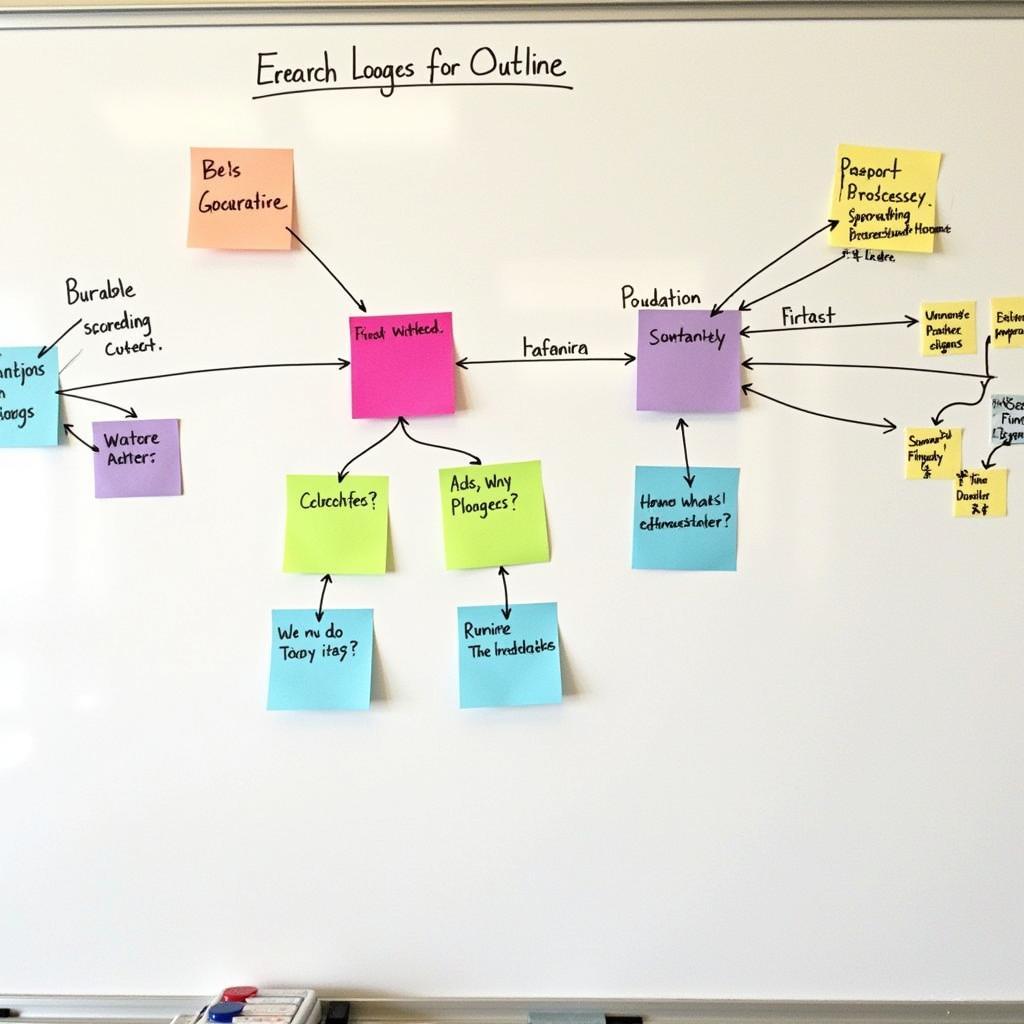Creating a compelling research presentation starts long before you open your presentation software. The key to success lies in a well-structured outline that guides your research and ensures a clear, engaging delivery. Whether you’re presenting at a conference, in a classroom, or even in the paranormal field, a strong outline is your secret weapon.
Why You Need a Solid Research Presentation Outline
An outline is the backbone of any effective presentation. It helps you organize your thoughts, prioritize information, and ensure a logical flow. Without one, your presentation can quickly become a jumbled mess, leaving your audience confused and disengaged.
Think of it this way: imagine investigating a haunting without first mapping out the location, understanding its history, or identifying potential hotspots of activity. Chaos, right? The same applies to your research presentation.
 Planning a Research Presentation Outline
Planning a Research Presentation Outline
Key Elements of an Effective Outline
A winning outline for a research presentation typically includes the following sections:
1. Title: A concise and captivating title that clearly reflects your research topic.
2. Introduction:
- Hook: Grab your audience’s attention from the get-go with a compelling anecdote, a startling statistic, or a thought-provoking question.
- Background: Provide context for your research, explaining the significance of the topic and any relevant existing literature.
- Research Question/Hypothesis: Clearly state the central question or hypothesis driving your research.
- Purpose/Objectives: Outline the specific aims and objectives of your study.
3. Literature Review (Optional): Summarize previous research relevant to your topic, highlighting any gaps or controversies that your work addresses.
4. Methods:
- Design: Describe the research design you employed (e.g., experimental, observational, qualitative).
- Participants/Subjects: Specify who or what you studied and how you selected your sample.
- Materials/Instruments: Detail the tools and instruments used in your research.
- Procedure: Outline the steps you took to collect and analyze your data.
5. Results: Present your findings in a clear and concise manner, using tables, graphs, or charts to illustrate key data points. Avoid overwhelming your audience with too much technical detail.
6. Discussion:
- Interpretation: Analyze and interpret your findings in light of your research question or hypothesis.
- Limitations: Acknowledge any limitations of your study that may have influenced the results.
- Implications: Discuss the broader implications of your findings for the field and potential future directions for research.
7. Conclusion:
- Summary: Briefly restate your main findings and their significance.
- Conclusion: Reiterate the answer to your research question or the outcome of testing your hypothesis.
- Call to Action: Encourage further discussion or investigation into the topic.
8. References: List all sources cited in your presentation using a consistent citation style.
 Structuring a Research Presentation Effectively
Structuring a Research Presentation Effectively
Tips for Creating a Winning Outline for Research Presentation
- Know Your Audience: Tailor your language, level of detail, and presentation style to the specific audience you’ll be addressing.
- Start with a Strong Hook: Just like a good ghost story, your presentation needs to capture attention from the start.
- Use Clear and Concise Language: Avoid jargon and technical terms that your audience may not understand.
- Visualize Your Data: Transform raw data into easily digestible visuals like charts and graphs.
- Practice Makes Perfect: Rehearse your presentation thoroughly, using your outline as a guide.
FAQs about Research Presentation Outlines
1. How detailed should my outline be?
The level of detail depends on the complexity of your research and the length of your presentation. However, it’s generally best to err on the side of being too detailed. You can always adjust the level of information you share during the actual presentation.
2. Can I deviate from my outline during the presentation?
While it’s good to have a plan, it’s also important to be flexible. If you find that your audience is particularly interested in a certain aspect of your research, you can always spend a bit more time on that section.
3. What if I don’t have any results yet?
If you’re still in the early stages of your research, you can focus your presentation on your research plan. Outline your research question, hypothesis, methods, and expected outcomes.
Need Help with Your Research?
Crafting a compelling research presentation can be a daunting task. If you’re struggling to organize your thoughts, analyze your data, or simply need an extra pair of eyes on your work, don’t hesitate to reach out. Contact us at research@gmail.com or visit our website for more resources and support.
We’re here to help you bring your research to life!